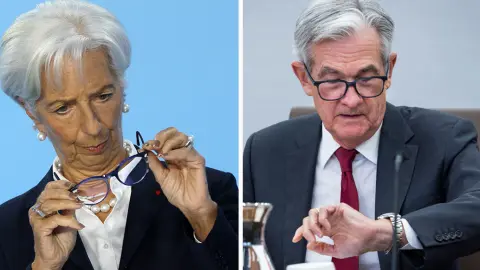UK recession inevitable as government winds back economic support
Prospects of fiscal tightening, limited energy support, and sky-high mortgage rates look set to reduce the size of the UK economy by roughly 2% over several quarters
The new prime minister has succeeded in calming markets
The appointment of Rishi Sunak as the new UK prime minister heralds a very different fiscal approach to his predecessor. Promises of debt sustainability have succeeded in stabilising financial markets, and both the pound and gilt yields have gone full circle since the mid-September ‘mini budget’. The political risk premium, as measured by the spread between German and UK 10-year yields, has narrowed back, although it is still wider than it was before the Conservative leadership contest started in July.
Unfortunately, that’s where the good news stops. Sunak may have tentatively won back investor confidence, but he’ll need to find savings worth roughly £30-40bn/year to convince the independent Office for Budget Responsibility that debt won’t rise across the medium-term as a percentage of GDP. With very limited scope to cut day-to-day spending, we suspect he’ll have to chop back public investment plans and potentially also look at increases to personal taxes.
Energy support to become less generous
None of this will be good for growth, though the impact will be dominated by a decision to make the government’s flagship energy support programme less generous from April 2023. Under existing plans, the average household energy bill is capped at £2,500 for two years, but the government has signalled this will become more targeted.
Aside from adjusting income tax rates, the only obvious way of doing this would be to make a distinction between those on welfare support and those that aren’t. One scenario could see most consumers move back to paying the Ofgem-regulated price from April.
The cost of fixing household energy bills has collapsed
Under that sort of policy, we'd expect most households to pay on average £3,300 in FY2023 for energy, without any government support. As the chart shows, the sharp fall in gas prices means that estimate has halved since August. But that would still leave the average household paying close to 10% of their disposable income on energy.
Alongside that, mortgage rates look set to fall fairly gradually, against a backdrop of stubbornly high Bank of England expectations and a greater premium from lenders for high loan-to-value products. With roughly a third of mortgages fixed for two years, millions of homeowners look set to lock-in these higher rates. The two-year fixed rate recently peaked at 6.5%.
A recession looks inevitable
All of this suggests a recession is now inevitable, and we’ve once again downgraded our GDP forecasts. We now expect the size of the economy to shrink by roughly 2% over four quarters, concentrated in the first half of 2023.
Admittedly these forecasts are still heavily contingent on how the government adjusts its energy support. If gas prices begin to rise, particularly for winter 2023/24 contracts, then the government will be under heavy pressure to once again extend its energy support to all households beyond April next year.
This publication has been prepared by ING solely for information purposes irrespective of a particular user's means, financial situation or investment objectives. The information does not constitute investment recommendation, and nor is it investment, legal or tax advice or an offer or solicitation to purchase or sell any financial instrument. Read more
Download
Download article
4 November 2022
ING’s November Monthly: The long wait for the pivot This bundle contains 14 Articles